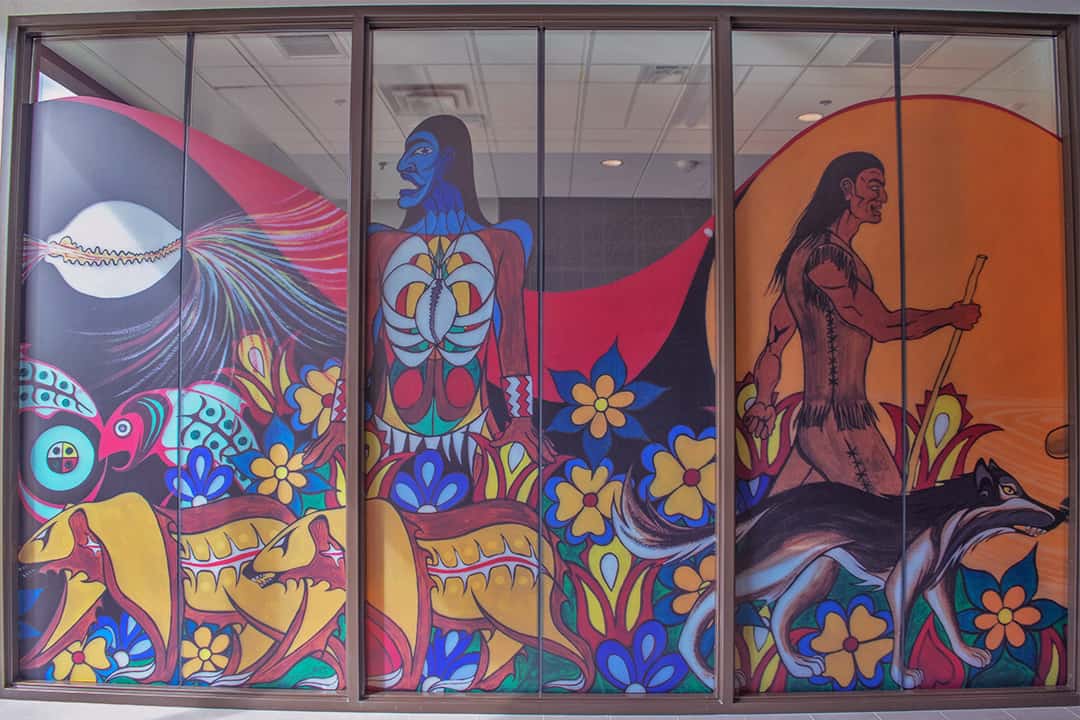On September 22, U of T announced its new Indigenous Tuition Initiative, which will cover tuition fees for students from nine First Nations communities whose territories “are situated on or adjacent to” the St. George, Mississauga, and Scarborough campuses, according to U of T News. The university will pay for the tuition for students from Alderville First Nation, Curve Lake First Nation, Hiawatha First Nation, Nation Hurrone-Wendat/Huron-Wendat First Nation, Mississauga First Nation, Mississaugas of the Credit First Nation, Mississaugas of Scugog Island First Nation, Mohawks of the Bay of Quinte (Tyendinaga Mohawk), and Six Nations of the Grand River.
U of T began charging Indigenous students living outside of Ontario the domestic provincial tuition rate in May 2022. As part of the new initiative, the university will also charge Native American or Alaska Native students from the continental United States the domestic Ontario tuition rate. The decision recognizes the Jay Treaty of 1794, which allows for free movement for Indigenous peoples between the US and Canada.
Indigenous peoples in the Canadian education system
According to the 2016 census, approximately 53 per cent of Indigenous individuals in Ontario between the ages of 25 and 64 had some sort of post-secondary education, compared to 65 per cent among all people living in Ontario. Although university completion rates increased among Indigenous peoples in Canada between 2016 and 2021, they haven’t increased as quickly as completion rates amongst non-Indigenous people, widening the post-secondary education gap between Indigenous and non-Indigenous people in Canada.
In the 2019 book Knowing the Past, Facing the Future: Indigenous Education in Canada, Sheila Carr-Stewart — a professor emerita at the University of Saskatchewan’s College of Education and professor at the University of Alberta — noted how the federal government has failed to meet education-related promises made in treaties to First Nations or provide adequate funding for Indigenous students’ education. The book also discusses how the effects of the genocidal Indian residential school system continue to negatively impact Indigenous students and how the Canadian educational system prioritizes colonial beliefs and worldviews.
The university’s announcement comes nine months after two U of T professors presented research that found the university profited from dispossessed Indigenous lands to fund its own development. According to their research, in 1827, U of T obtained nearly 226,000 acres of land that the Crown had seized, which it sold for roughly $43 million in 2023 dollars — enough to cover domestic Ontario tuition for more than 7,000 full-time students enrolled in regulated Faculty of Arts and Science programs.
The initiative
The university officially launched the new initiative on October 11 as part of its efforts to be more “accessible and inclusive” for Indigenous students, according to an article from U of T News. The article also states that the policy aims to strengthen relationships between U of T and Indigenous communities in Canada and the United States.
The initiative aligns with the 34 calls to action made by the final report of the Steering Committee of the University of Toronto Response to the Truth and Reconciliation Commission of Canada, titled Answering the Call: Wecheehetowin.
In its report, the U of T commission called on the university to incorporate Indigenous content into its curricula, create dedicated Indigenous spaces on campus, and launch an initiative to support the hiring of Indigenous faculty.
According to Shannon Simpson — the senior director of the Office of Indigenous Initiatives at U of T — the administration consulted with each of the nine First Nations communities named in the announcement to strengthen their relationships and build pathways to increase recruitment from these communities.
“I reached out to the chiefs of all nine communities, and connected individually with each chief or the head for education for each community, as they preferred, to discuss the initiative,” wrote Simpson in a statement to The Varsity. “All were supportive.”
Director of the Centre for Indigenous Studies and Professor Susan Hill commended the university for its tuition initiative, explaining that it “puts into action the words in the University’s Land Acknowledgement.” In an email to The Varsity, Hill wrote, “there are a number of initiatives in the fundraising phases for expanded scholarship opportunities that will enhance this new initiative as well as other programs/scholarships that already exist at the University.”
Eligibility
Any student who identifies as a member of one of the nine named First Nations communities and is currently enrolled in the university on a full-time or part-time basis can request a tuition grant from the Indigenous Tuition Initiative.
The tuition grant does not cover ancillary fees — such as special coursework equipment, transcript fees, or library fines.
The grant is renewable and can be combined with other U of T funding issued to a student. The tuition initiative website explains that once the student’s band has confirmed their membership in one of the nine named First Nations communities, U of T automatically applies the grant to the student’s account for each year of study. Students who change their program may need to re-apply for the tuition grant.
For students who have already paid their tuition fees for the 2023–2024 academic school year, U of T will refund the grant amount to their bank account. For students who have received third-party funding to pay for their tuition, U of T will issue a refund to the third party.
Editor’s note (October 17): Some wording in this article was changed to clarify that the university is covering students’ tuition, not waiving it.



No comments to display.